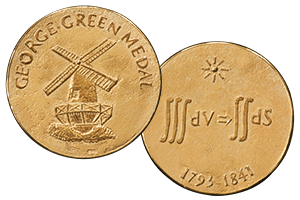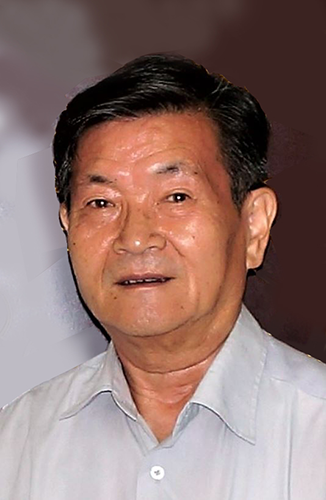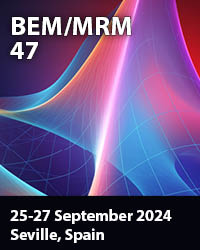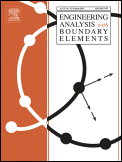
The George Green Medal was established by the University of Mississippi at Oxford, Mississippi, USA, and the Wessex Institute and is supported by Elsevier. It is in honour of the man who single-handedly set up the basis for the modern Boundary Element Method, among other notable achievements.
The Medal is awarded to those scientists who have carried out original work with practical applications in the field of Boundary Elements and other Mesh Reduction Methods, continuing in this manner to further develop the pioneering ideas of George Green. They are also persons of the highest integrity who, by sharing their knowledge, have helped to establish research groups all around the world. The Medal is given once a year and is presented during the BEM/MRM Conference.
ITeCons, Coimbra, Portugal – 2nd July 2019
The George Green Medal 2019 was presented on the occasion of the 42nd International Conference on Boundary Elements and other Mesh Reduction Methods (BEM/MRM 42). The ceremony took place during a special session on Tuesday 2nd July, followed by a keynote address from the medal recipient.
Professor Zhenhan Yao

The recipient of the 2019 Medal was Professor Zhenhan Yao, Director of the Institute of Solid Mechanics at Tsinghua University in Beijing until his retirement in 2003.
Professor Yao graduated from Tsinghua University in Solid Mechanics in 1966 and became a lecturer at that institution. In 1989 he was promoted to full professor. His research interests are in computational solid mechanics, especially boundary element methods, which he has studied for 40 years and obtained a series of achievements from the theory of conventional BEM to the fast multipole BEM and boundary-type meshless method. In recent years, by reflecting on why BEM has been gradually marginalised in engineering applications, he presented a new High-Accuracy BEM and High-Performance BEM, and taken the local stress analysis of the real beam, plate and shell structure as the breakthrough point to continue to give play to its advantages. He has made a relentless effort to make BEM an indispensable supplement to the FEM.
He has supervised 35 PhD and 20 MSc degrees and has over 300 publications in journals and proceedings of national and international conferences. He has published a book on BEM and FM-BEM in Chinese. He has chaired the China National Conference on Boundary Elements in Engineering many times and is one of the founders of the Asia-Pacific International Conference on Computational Methods in Engineering (ICOME). He is an Associate Editor of the International Journal on Engineering Analysis with Boundary Elements (EABE).
Keynote Presentation
“Basic ideas and research progress of a new High-Accuracy and High-Performance Boundary Element Method”
Zhenhan Yao, School of Aerospace Engineering, Tsinghua University, Beijing, China
Abstract
The accuracy verification of BEM often depends on comparing BEM results with those obtained from the respective FEM solution. As a consequence, the engineering community may take the view that since the results obtained by the BEM are consistent with those obtained by the FEM, it is more convenient to apply the widely used FEM.
In view of the above problem, the basic idea of error analysis for numerical simulation of practical engineering problems was introduced, abandoning the dependence on FEM for accuracy verification. Based on Rizzo type boundary integral equation, a new High-Accuracy BEM (HABEM) was proposed for the elastic static problem. In HABEM, the accuracy verification is reduced to the effective control of the calculation error (mainly the integration error) and the discretization error. Taking the bending of a cantilever thin-plate beam under generalized plane stress as benchmark problem, the advantages of the BEM in reducing dimension and high precision have been shown and then, taking the 3D analysis of the same problem as a benchmark problem, a HABEM for 3D analysis has been established. In addition to the elasticity problems, the extension of this approach to other problems such as acoustic problems has been tried.
On this basis, a fast algorithm was further introduced and the additional errors of the fast algorithm and the iterative solver of linear algebraic equations were controlled to develop the High-Performance BEM (HPBEM). For some simple problems, it could be seen that introducing the ACA fast algorithm and iterative solver GMRES has greatly improved the computational efficiency and expanded the solution scale. However, the iterative solution is difficult to converge for the thin cantilever square plate and slender cantilever beam. This key problem in the development of HPBEM is solved by observing that, for the slender beam and thin plate without local stress concentration, the discretization error can be controlled satisfactorily by subdividing a few elements, provided enough high-order elements are used. However, if lower-order elements are used, many more elements should be subdivided.
Previous Laureates
Details of the previous George Green Medal presentations can be found in the conference reports listed below:
- 2018 Ney Dumont, Brazil - BEM/MRM 41 Conference Report
- 2017 Antonio Tadeu, Portugal - BEM/MRM 40 Conference Report
- 2017 Henry Power, UK - BEM/MRM 40 Conference Report
- 2016 Alex Cheng, USA - BEM/MRM 39 Conference Report
- 2015 Edward Kansa, USA- BEM/MRM 38 Conference Report
- 2014 Carlos A Brebbia, UK - BEM/MRM 37 Conference Report
George Green (1793-1841)
George Green was a self-taught genius who mysteriously delivered one of the most influential mathematics and physics works of all time. He educated himself in mathematics and self-published the work “An Essay on the Application of Mathematical Analysis to the Theories of Electricity and Magnetism”. In his very first article he derived the Green’s first, second and third identities, forged the concept of Green’s function, and solved the problem of electrical potential created by a single charge placed inside a spherical metal shell. The ideas of Green’s function forever changed the landscape of science, as many physics and mathematics problems have been solved using this technique. As Green died early, and his work was discovered only posthumously, it remains a mystery today how Green could produce such a masterpiece without the guidance of a great teacher or school and, in fact, without a formal education. Only recently, due to the advent of powerful computers, has it been possible to take full advantage of Green’s pioneering developments.
For further information about the George Green Medal please contact:
George Green Medal
Wessex Institute
Ashurst Lodge, Ashurst
Southampton
SO40 7AA, UK
Tel: +44 (0) 238 029 3223
Email:




